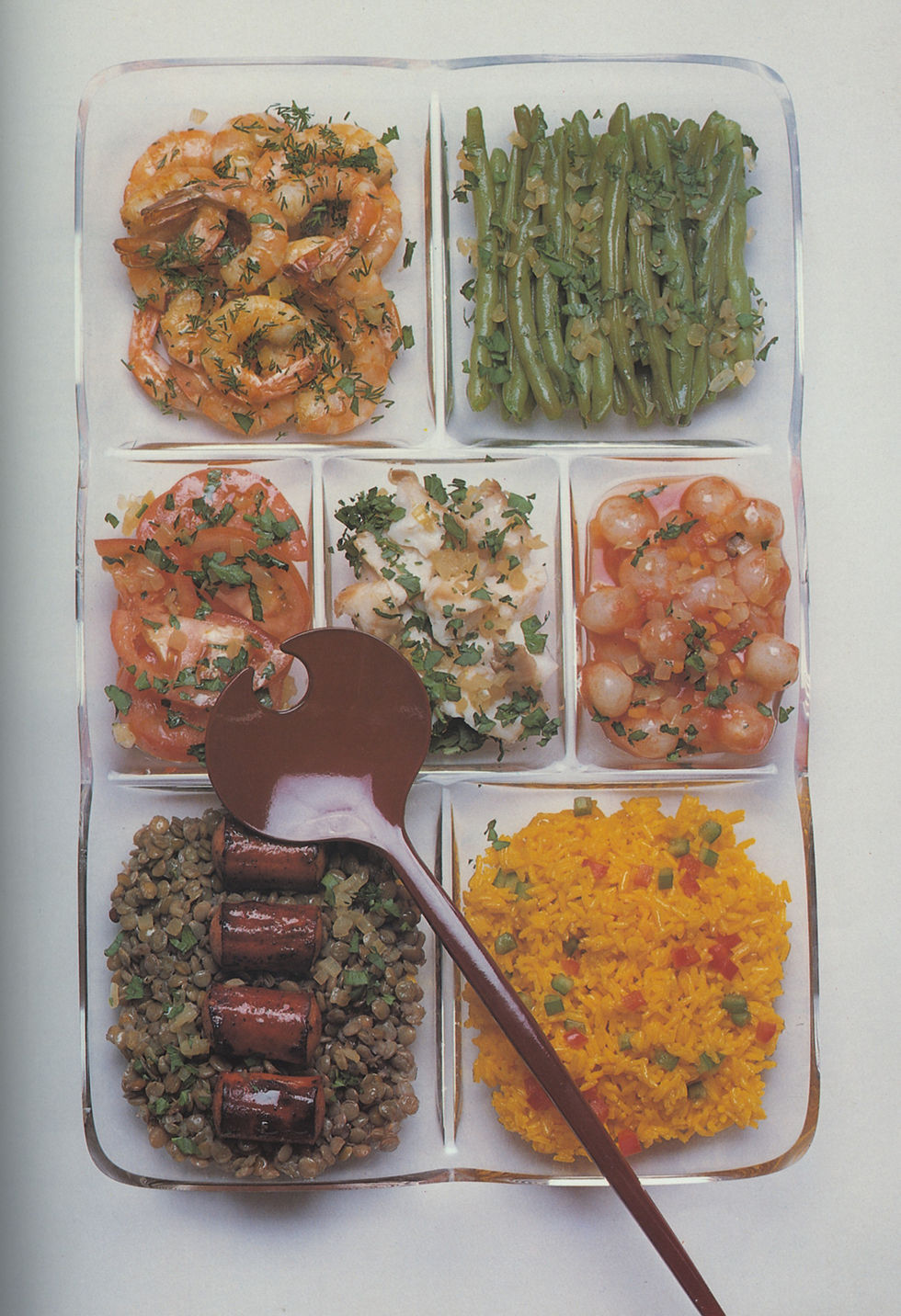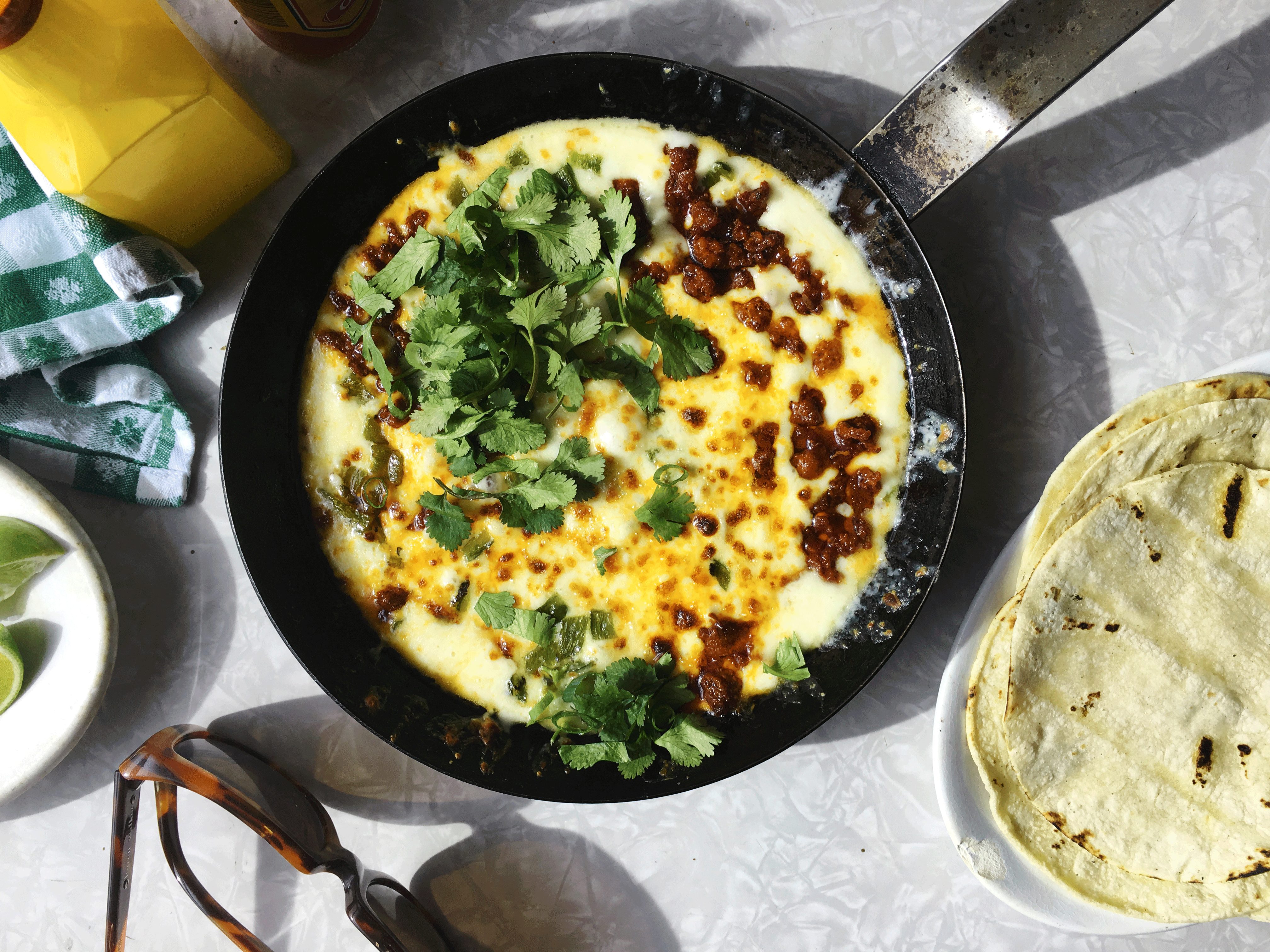Hors d'oeuvre variés - a first recipe
- rosemary
- Nov 28, 2021
- 5 min read
"The real purpose of the hors d'œuvre cours is to stimulate the appetite, not to drown it." Robert Carrier

The picture at left is from the second glossier edition of Robert Carrier's masterpiece Great Dishes of the World - or at least - the book that made him famous. I have talked about the book before, so I won't repeat myself here and will just concentrate on this first recipe - well set of recipes really. You have already got to page 61 when you finally meet recipes - the first part of the book being taken up by introductions and forewords, ingredients, methods and equipment. And the first chapter is actually titled Appetisers, but it starts with a short essay on the hors d'œuvre variés that you see illustrated here. All of those dishes appear in this first chapter, with the lentils and sausages being the first one. Not really what you would expect to see as an appetiser these days I suspect, although I have certainly seen this sort of thing in various restaurants in country France. A selection of little dishes along the lines that Robert Carrier describes in his essay.
"most of the glamorous restaurants of the world serve a galaxy of titbits, both hot and cold, which fly under the banner of hors-d'œuvre variés. These appetite stimulants are usually wheeled up to your table on a two or three tiered trolley, each tier of which can hold up to twenty small dishes or raviers containing a colourful assortment of vegetables, marinated in olive oil and lemon juice and served à la vinaigrette, or prepared à la grècque with wine, olive oil, finely chopped onion, carrot and herbs. These trolleys come to us via France from Russia where the hors d'œuvre idea originated in the Russian zakouski table, set up in a room adjoining the reception room and wheeled in to satisfy far-travelling guests before dinner." Robert Carrier
I'm not sure whether you will ever come across those hors d'œuvre trolleys he talks about these days. Do the grand hotels and Michelin starred restaurants serve this sort of thing anymore? I suspect not. You are more likely I think to get an amuse bouche - or indeed a selection - those exquisite little morsels which are not on the menu and are always a surprise. Indeed they are often the best and most imaginative thing you eat. Like the selection below from Vue de Monde. They certainly set you in an anticipatory mood. It seems to be a creative outlet for chefs these days.

Tiny tastes that you couldn't possibly create at home. Or could you?
They are blank canvases for self-expression, an opportunity to set the tone for the evening. But they should never be hard to pull off - this is fun, remember?" Jenny Rosenstrach - Bon Appétit

Yes it is fun. The hors d'œuvre trolley has evolved these days in different ways. One way is the platter which I wrote about back in October. Summer is on its way and platters are a good way to throw together something tempting and appetising and fun without much effort. Indeed it could just mean a trip to the supermarket and a quarter of an hour or so laying it all out. Money is your only limitation really, and even that need not be much of one.
The other option is the mezze table - a table with plates of snackable items - dips, fritters, pastries, salads, all manner of delectable and diverse foods and not just from the middle-east of course. Every nation on earth has something to offer in this vein.
Dips are indeed the stars of such meals,
"But with dip, the learning is simple: if you serve it, they will come."
say the people from the Bon Appétit test kitchen, illustrating the concept with a mind-melting queso fundido that takes 10 minutes to assemble but a lifetime to forget." Which they illustrate with two different versions - which seem to be a sort of Mexican fondue - Queso Fundido version 1 and Queso Fundido version 2.
And yes I only included these because I came across them when searching for the answer to the question of what happened to the hors d'œuvre trolley. There are literally hundreds and hundreds of dip recipes out there, or you can buy one, or make one yourself from a tin of beans and extras. And the things you can use to dip into the dip are mind bogglingly diverse as well.
I did however, deliberately search the latest editions of the Coles and Woolworths magazines to see what they had to offer in the way of what could be called Hors d'œuvres. Coles did better here, as the current Woolworths starters list contains larger dishes that could be called Starters rather than Hors d'œuvres, canapés, amuse bouches or appetisers. They were more first course things - or dressings. Which isn't to say they don't ever do that kind of thing. Just not this month. Coles, however were fully into it this month with finger food - perhaps the modern term for such dishes. Here are just some: Lamb spinach and feta cigars; Wonton cups with hoisin chicken; Watermelon, olive and bocconcini skewers; Oysters with cucumber and lime granita; Mini prawn tostadas with mango salsa - from Curtis Stone that one and potato roesti with yoghurt and hot-smoked salmon, which doesn't appear to have a recipe online.
All of the above are pretty typical of the sort of thing you will find in recipe books and magazines these days for what could still be called hors d'œuvre variés. They are indeed outside of the main work - the main meal, they are something you nibble on when you arrive at a party and yet they are quite different to Robert Carrier's original selection. Lighter and fresher looking perhaps. They even look elaborate, and some are, but mostly not. Those spectacular skewers would be a five minute assembly job - but so Christmassy. And the other thing that has changed is that these days the Hors d'œuvre are no longer outside of the main work/meal either. They could be the entire meal.

I really tried hard to find a picture of one of those trolleys in a restaurant, but simply couldn't. The nearest I came to it was this - silver service on a vintage train. We don't do fancy things with eggs and mayonnaise these days. The crudités linger though - with a dip, and so do some of the salads, although they are often in the form of a salsa, or a wrap.

Times have changed. What we consider as an hors d'œuvre is not at all the same as Robert Carrier lived with but he too thought they should be quick and easy to prepare - well mostly anyway and fancy to look at. It's just that what was considered fancy then is not fancy today. Below is an example of fancy today - I don't know where it comes from but it's scallop tartare and winter citrus. Very fancy. We can still do fancy.















Comments